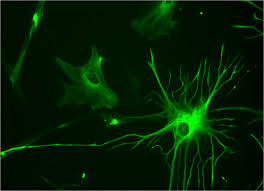How astrocytes close a critical period
During the visual critical period, brain circuits are rewired to adjust to sensory input. Closure of the critical period stabilizes the circuits. Looking at development in the mouse visual cortex, Ribot et al. found that astrocytes increase their expression of the gap junction channel subunit connexin 30, which in turn inhibits expression of a matrix-degrading enzyme (see the Perspective by Kofuji and Araque). As the matrix stabilizes, inhibitory interneurons mature, and the unusual flexibility of the critical period comes to an end.
Abstract
Brain postnatal development is characterized by critical periods of experience-dependent remodeling of neuronal circuits. Failure to end these periods results in neurodevelopmental disorders. The cellular processes defining critical-period timing remain unclear. Here, we show that in the mouse visual cortex, astrocytes control critical-period closure. We uncover the underlying pathway, which involves astrocytic regulation of the extracellular matrix, allowing interneuron maturation. Unconventional astrocyte connexin signaling hinders expression of extracellular matrix–degrading enzyme matrix metalloproteinase 9 (MMP9) through RhoA–guanosine triphosphatase activation. Thus, astrocytes not only influence the activity of single synapses but also are key elements in the experience-dependent wiring of brain circuits.







